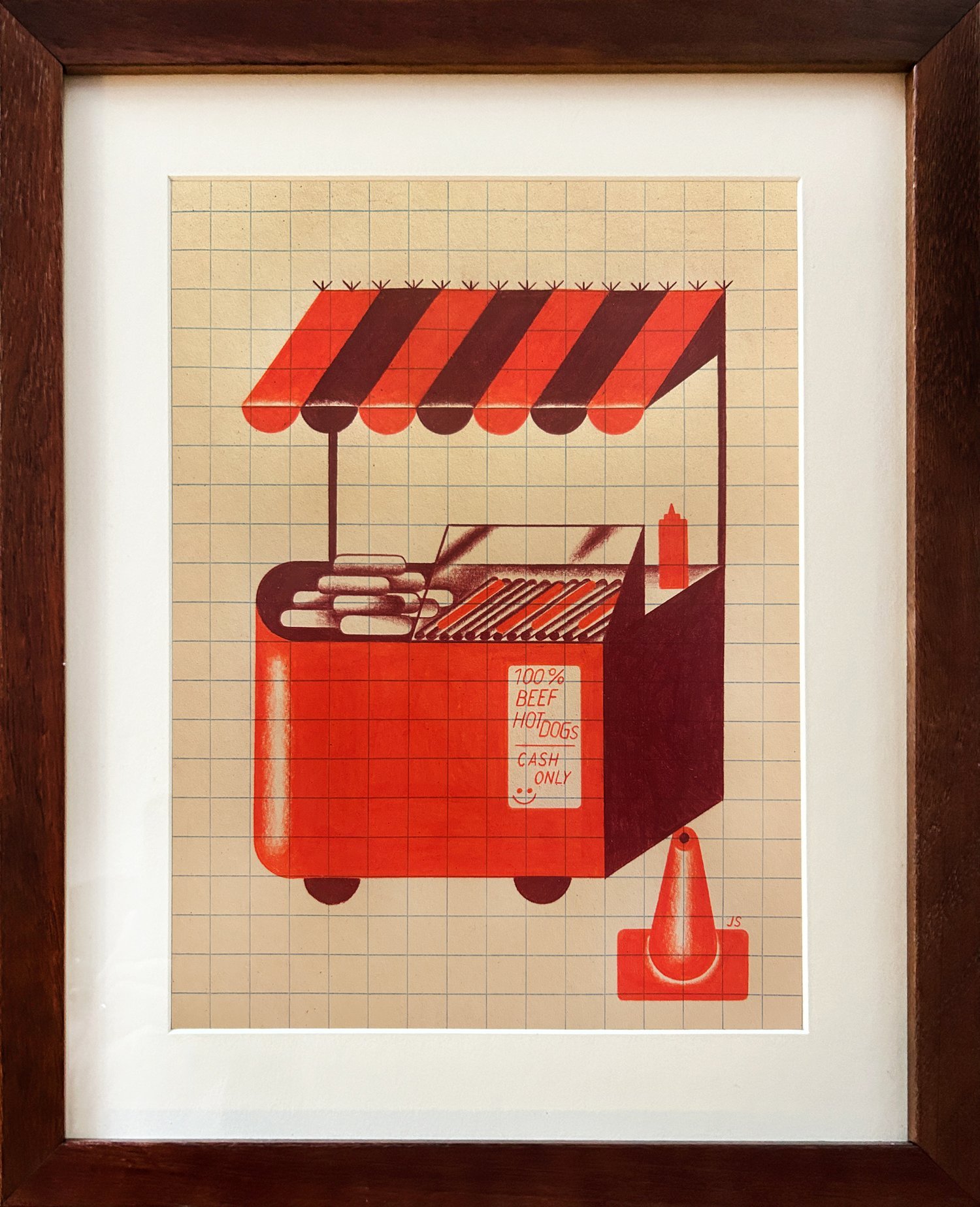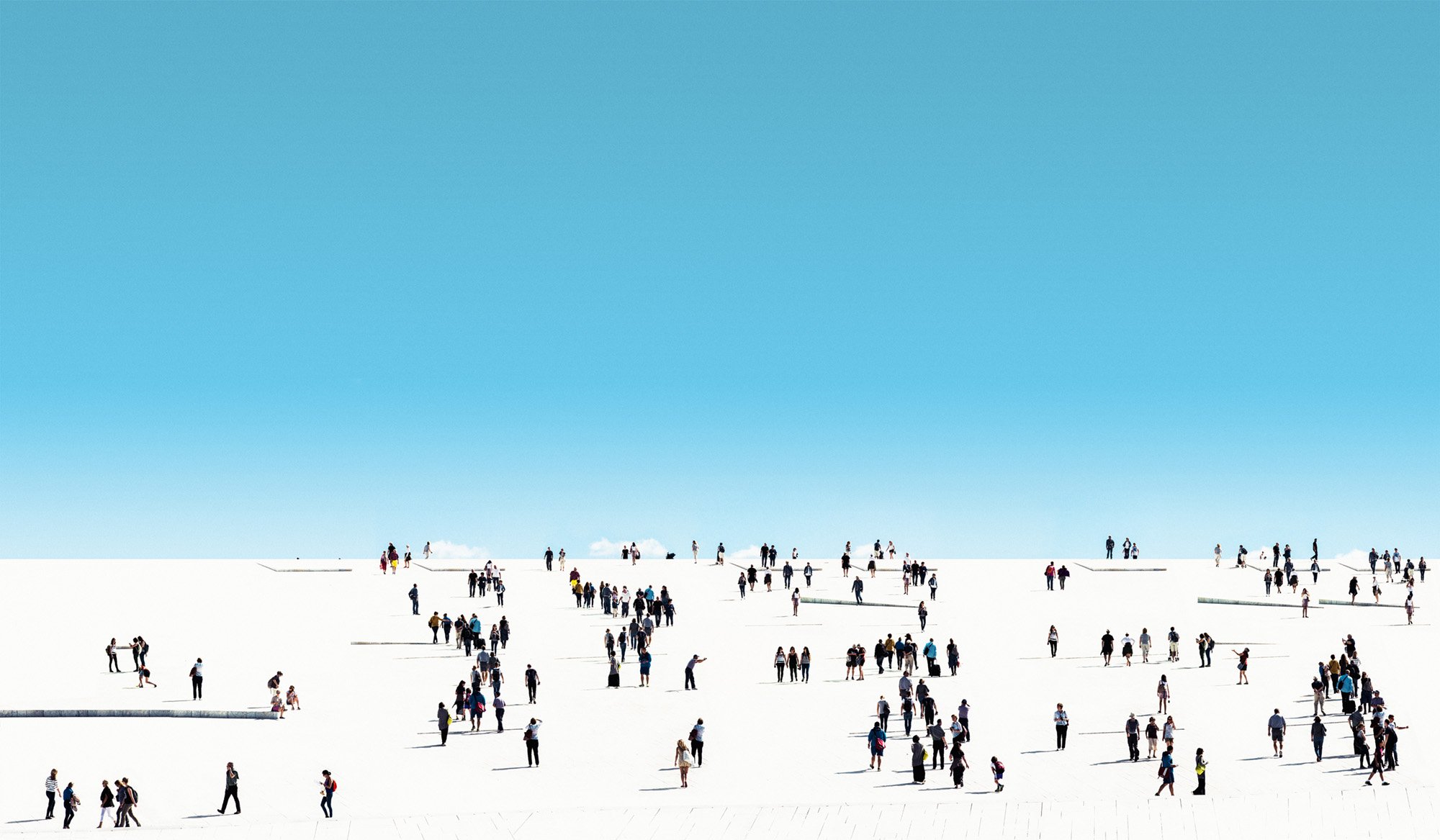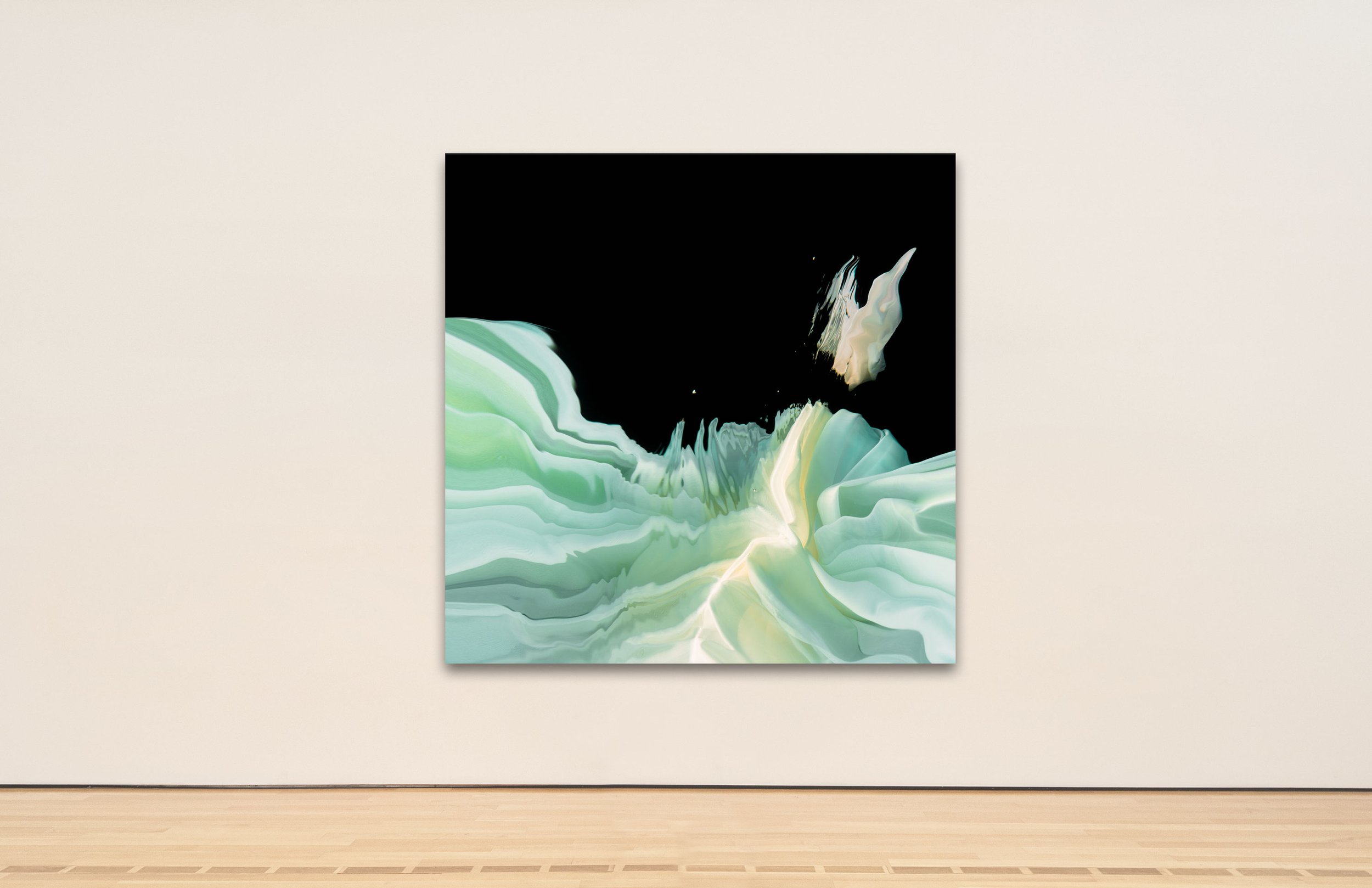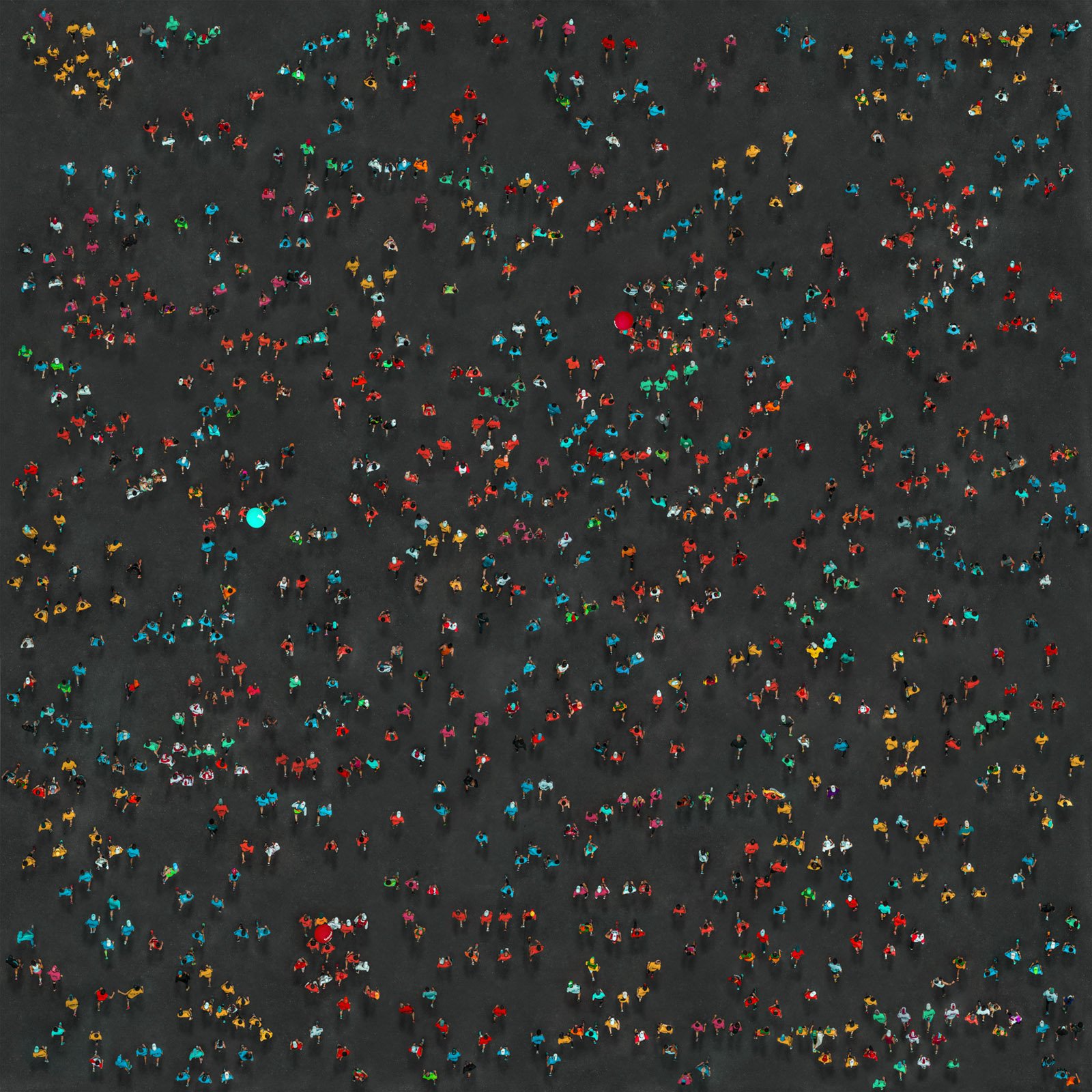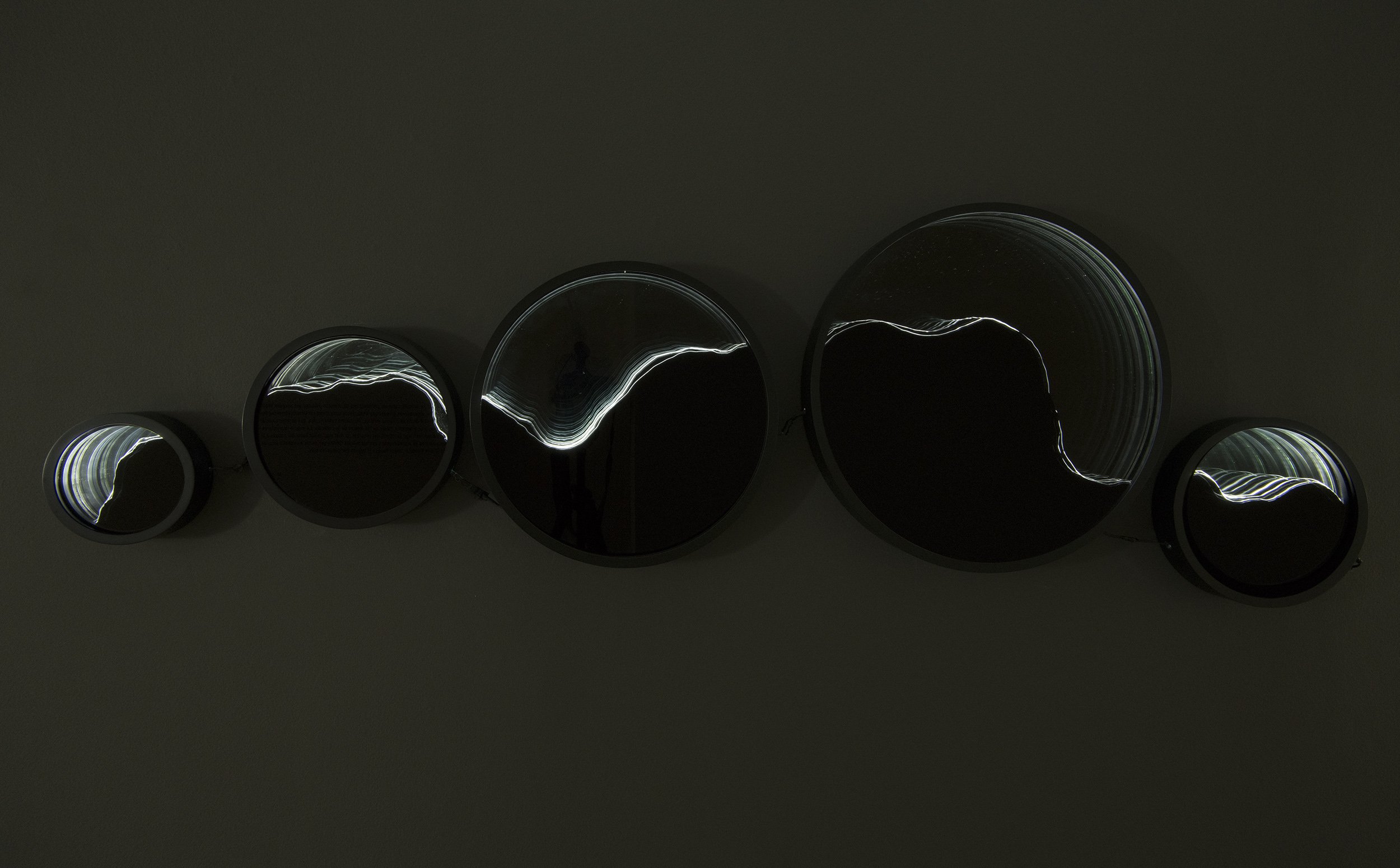Artist Josh Stover creates his artistic environment from a world of his own. His art pieces are representations of how he chooses to portray a reality that sometimes it’s close to home, in a literal and figurative manner. He selects items that many times are related to a home environment, and ones that share that connectivity with the humans who interact with them. Stover is particular about his work and it shows in his practice and the meticulous details, from proportions to colors, you see in each piece.
Process
Stover’s pieces have an innate sense of symmetry and display this through dimension and space. Because of the mindful approach behind symmetry, the viewer can enjoy the details of each artwork. Each item within the art piece stands independently and doesn’t intertwine with another as much. Instead, there is a sense of sharing the space, and it is due to the space that each component is part of through its shape and color, and not one object overpowers the other. This symmetry and space between objects create a sense of harmony. It allows our eyes to focus on each thing present without overlooking something. It is as if saying everything presented matters and should be viewed equally as it is portrayed.
He explains:
My process starts by sketching out ideas on my iPad using Procreate. I like to plan out the layout and colors of the painting using that program so I don’t have to make as many decisions when I am in the painting phase - although I do like to add in some extra details as they come to me while I am painting. I usually paint or draw things that I own or want - vintage pieces I have saved online or items that we have collected in our home. I like including things that have meaning to me personally, like a book I like or an object I have collected.
Thanks to its simplicity, each item portrayed in Stover’s design style has a distinct sense of beauty. The color almost seems like an added feature to share the object’s place in the world. Shape and space take priority in the art itself for the sake of balance and a proportionate piece.
On Symmetry
Stover’s work is highly inspired by the geometrical, but it is also intentional about the proportion and placement of things in the artwork itself. He has an eye for what is interesting and what he wants to portray through objects that have meaning to him and that he enjoys collecting. However, his work is also sharp and allows for definition and proportion. He admits that lately, he has been more focused on those lines that create cleanliness around his pieces. Because of that, one can see every detail with more appreciation since it was placed there intentionally to be seen and acknowledged.
He talks about the evolution of his work’s technique:
I think my work has gotten more graphic and “tighter” over the past few years. I used to make work that was slightly looser and more painterly but lately I have been using a lot of tape and stencils to get crisp perfect lines. I like that process more because it kind of changes the way I think about a piece as I’m making it. It makes me simplify things into straight lines in a way that I enjoy. I started doing more drawings this past year and in my drawings I use rulers and stencils to build an image - I think this has had an influence on my painting style.
Deeper Meaning
To the people who consider artwork without people to be not as engaging, I will say to them that it is so because they aren’t looking in and around. They aren’t searching for the clues the art piece gives them; the same lesson applies here. Looking at Stover’s artwork, you are staring into a world that seems, at times, to be from another decade. I say this because there is such stillness that it feels as though these moments were captured in time for a reason, and that is to be remembered. The Art Deco-inspired design shows us colors that pop, shadows, and slight curves that can be appreciated. They declare a feeling of things that are, in a way, living because humans interact with them, such as a melted ice cream or a broken shopping bag; these items tell their own stories about their surroundings and those around them. There’s that human connectivity to feeling comfort when seeing a clean space with a piano and bird, or perhaps a feeling of fun and partying when seeing a stack of martini cups with cherries. These items help create moments that humans can remember and possibly consider memorable as part of our existence. So, indeed, these little moments and still-life items matter.
Stover says:
I’m drawn to mostly vintage items. I like chrome chairs and wooden furniture that is from the Art Deco to Mid Century eras. I like that they often have bold curvy shapes combined with straight lines. I also paint a lot of small objects and folk art that my wife and I have collected over the years. I sometimes make up furniture and objects too, taking inspiration from things I have seen. The most important thing I think about is the simplicity and the shape of an object when I consider including it in a painting.
Concluding Musings
There is so much beauty and depth under the surface within the details of Stover’s artwork. It could be how flowers were portrayed at a flower stand, which shares a lot about the people behind the objects and how they live, which is the key to leaning into that understanding with these lovely pieces. It is being open to learning more about the possibilities of what is, what was, or even could be in the future in the realities we see portrayed. If there’s a scene portrayed, it is because there’s more to uncover about the humanity behind those moments and the interaction between humans and the objects. Were they happy or sad? What happens next when someone interacts with this scene? It is all up to your imagination as part of the beauty in art, and these possibilities are endless.
To learn more about Josh’s work, please visit his website.
The following poem reminds us why objects hold memories for us, just like they do in Josh’s work:
Housekeeping
We mourn the broken things, chair legs
wrenched from their seats, chipped plates,
the threadbare clothes. We work the magic
of glue, drive the nails, mend the holes.
We save what we can, melt small pieces
of soap, gather fallen pecans, keep neck bones
for soup. Beating rugs against the house,
we watch dust, lit like stars, spreading
across the yard. Late afternoon, we draw
the blinds to cool the rooms, drive the bugs
out. My mother irons, singing, lost in reverie.
I mark the pages of a mail-order catalog,
listen for passing cars. All day we watch
for the mail, some news from a distant place.

